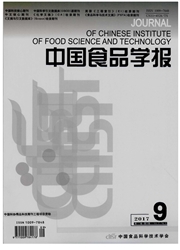

 中文摘要:
中文摘要:
应用近红外光谱法,研究分析汽车驾驶员疲劳态下的脑氧饱和度,探讨疲劳机理,为驾驶疲劳及时预警提供新的监测思路。参试人员20名,分为两组(各10名),一组为实验组,一组为对照组。实验组执行汽车模拟驾驶作业3 h,对照组坐姿下正常休息3 h。应用近红外光谱法监测试验人员作业前后脑氧饱和度。经方差分析发现,实验组人员模拟驾驶后脑氧饱和度(rSO2)显著性下降(p〈0.01),反应时间明显延长;对照组rSO2水平下降不显著(p〉0.05)。脑氧饱和度水平(rSO2)与驾驶疲劳存在密切相关性。近红外光谱法监测脑氧具有连续、实时、无创的特点,受外界干扰小。近红外光谱法监测驾驶员脑氧信息是预测驾驶疲劳的一种可行的方法。
 英文摘要:
英文摘要:
The objective of the present study is to assess the cerebral saturation under driver fatigue based on the near infrared spectroscopy (NIRS) signals. Twenty healthy male subjects were randomly divided into two groups: A-group (study group) and B-group (control group). All subjects were required to be well rested before the experiment. In A-group the subjects were required to perform the simulated driving task for 3 hours. Cerebral oxygenation signal was monitored for 20 minutes prior to and after the prescribed task period from the left frontal lobe. The results show that cerebral oxygen saturation was found to be significantly lower following 3-hour driving in the task group compared to that in the control group (F= 15.92, p〈0. 001). Also a significant difference in selective reaction time was observed between the task group and control group during the post task period (p=0. 021). These findings showed that the cerebral blood oxygen saturation was closely related to the driver fatigue. The decline of the cerebral oxygen saturation might indicate a reduced cerebral oxygen delivery. This suggests that NIRS could provide a non-invasive method to detect driver fatigue.
 同期刊论文项目
同期刊论文项目
 同项目期刊论文
同项目期刊论文
 Age-related changes in spontaneous oscillations assessed by wavelet transform of cerebral oxygenatio
Age-related changes in spontaneous oscillations assessed by wavelet transform of cerebral oxygenatio Wavelet analysis of cerebral oxygenation signal measured by near infrared spectroscopy in subjects w
Wavelet analysis of cerebral oxygenation signal measured by near infrared spectroscopy in subjects w Wavelet analysis of lumbar muscle oxygenation signals during whole-body vibration - implications for
Wavelet analysis of lumbar muscle oxygenation signals during whole-body vibration - implications for Spectral analysis of near-infrared spectroscopy signals measured from prefrontal lobe in subjects at
Spectral analysis of near-infrared spectroscopy signals measured from prefrontal lobe in subjects at Assessment of cerebral oxygenation during prolonged simulated driving using near infrared spectrosco
Assessment of cerebral oxygenation during prolonged simulated driving using near infrared spectrosco 期刊信息
期刊信息
